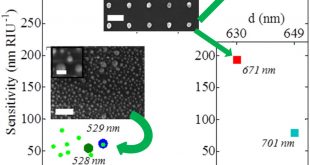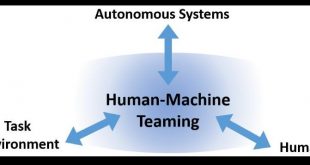The world faces the challenge of responding to not only the new issues emerging from COVID-19 but also those related to climate change and rising restrictions on natural resources, while sustainably meeting a growing demand for energy and food. These are intimately involved with the need to control climate change …
Read More »Quantum Brain sensors
Quantum sensors are measuring device that takes advantage of quantum correlations, such as states in a quantum superposition or entanglement, for better sensitivity and resolution than can be obtained by classical systems. QP will boost the capabilities of all sorts of sensory devices, such as gravimeters, which are used to …
Read More »Chemical/Biological Threat to Air Transportation
Historically, most terrorist attacks on civilian targets have involved the use of firearms or explosives, and current defensive strategies are aimed at preventing attacks perpetrated by such means. However, the use of the nerve agent sarin in 1995 to attack the Tokyo subway system, the use of the U.S. mail …
Read More »Metamaterials for Sensitive Biomolecule Sensing and Imaging
The ability to design and fabricate materials with new functionalities opens the door to a new world of possibilities. They can be tailored to either augment the functionality of existing devices or create new devices with superior performances. Metamaterials are artificially structured materials designed to control and manipulate physical phenomena …
Read More »Sustainable food technologies for future need to feed the 10 billion global population by 2050, amid threats to global food supply chain
The global population grows from 7 billion in 2010 to a projected 9.8 billion in 2050, and incomes grow across the developing world, overall food demand is on course to increase by more than 50 percent, and demand for animal-based foods by nearly 70 percent. Yet today, hundreds of millions …
Read More »DARPA ADAPTER developing bioelectric implant or ‘travel adapter’, which will OnDemand restore normal sleep and soldiers’ performance
Businessmen are traveling longer distances to meet potential clients, launch new projects, and negotiate deals, but traveling comes with poor sleep and jet lag. Science tells us jet lag causes everything from headaches to irritability, poor decision making, and loss of concentration. Warfighters are travelers and thus suffer from travelers’ …
Read More »Targeted Violence and Terrorism Prevention Through Health and Well-Being
Since the start of the Covid pandemic, as early research has indicated, the impact of social isolation and other life stressors on mental health has led to an increase in depression and anxiety. This can result in declines in social cohesion and social capital and can increase an individual’s willingness …
Read More »DARPA SocialSim developing effective Information warfare analysis tools for social media
A rapidly increasing percentage of the world’s population is connected to the global information environment. At the same time, the information environment is enabling social interactions that are radically changing how and at what rate information spreads. Both nation-states and nonstate actors have increasingly drawn upon this global information environment …
Read More »US DOD employing Synthetic Biology based on Self-assembly for on-demand bio-production of new materials for military
The COVID-19 pandemic, while demonstrating the nation’s vulnerabilities to biothreats, has also shown the fragility of the supply chain. The United States relies on foreign suppliers for a number of critical components including commodity chemicals, rare earth elements and active pharmaceutical ingredients, she said. Ensuring a resilient domestic supply chain …
Read More »Human Factors in Human-Machine Teaming is critical for efficient and effective integration of soldiers with complex machines.
Interactions with technologically sophisticated artificial intelligence (AI) agents are now commonplace. We increasingly rely on intelligent systems to extend our human capabilities, from chatbots that provide technical support to virtual assistants like Siri and Alexa. Examples of such systems include air traffic control, aircraft cockpits, chemical processing, and the power …
Read More » International Defense Security & Technology Your trusted Source for News, Research and Analysis
International Defense Security & Technology Your trusted Source for News, Research and Analysis








